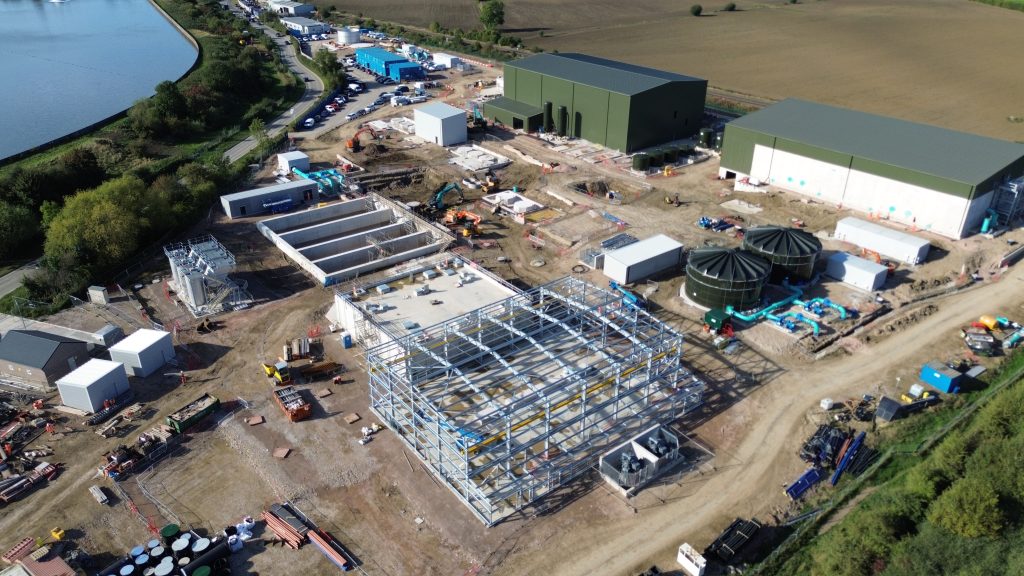MWH Treatment has completed the detailed design for Severn Trent Water’s state-of-the-art Witches Oak Water Treatment Works in Derbyshire, with civil construction substantially complete and mechanical and electrical installation well advanced for the plant, which will deliver crucial water security for approximately 224,000 households.
The new plant will provide an additional average flow of 65 million litres per day and increase resilience of the Derwent Valley aqueduct (DVA) network, which supplies the East Midlands grid.


The project is part of Severn Trent Water’s £566 million Green Recovery Programme, with MWH Treatment, an RSK Group company, appointed as principal contractor and designer, drawing on the company’s specific skills across design, engineering, procurement, construction and commissioning. MWH Treatment was also able to incorporate its recent design and construction experience with Severn Trent Water’s Church Wilne granular activated carbon plant.
MWH Treatment Project Director Richard Thomson said the project team had installed the innovative ceramic membrane pressure vessels, pipework, pumps and ancillary equipment. All the other process plant has been manufactured and installed during the summer months to make the most of the dry weather. The complex electrical control panels have been factory tested, installed and are now being connected for commissioning. The HV network was energised in October which is a major milestone achievement and has allowed commissioning to commence.
He said: “The ceramic membrane technology offers advantages, such as effective removal of pathogens, suspended solids and organic compounds to produce high-quality water. Ceramic membranes provide efficient microfiltration with superior fouling resistance, easier cleaning, higher flux rates and lower maintenance requirements. Ceramics have stronger mechanical strength, enabling them to handle higher solids loading and ensuring a longer asset life of 25 years.”
MWH Treatment has utilised digital delivery tools, including digital surveying, interactive visualisations, intelligent 3D models, 4D rehearsals and digital inspection and test plan field management.
Richard said: “In the hands of experienced engineers, these tools enable much greater project efficiency, with 3D elevating the design process and allowing construction sequencing and overlapping of site activities to optimise the schedule and reduce build time.
“The ability to view the project in such intricate detail, effectively being able to see inside the 3D model for the treatment works, offers real game-changing opportunities for project management. It becomes a truly interactive experience and one in which we can engage all our supply chain partners. Also, with multiple teams carrying out work across the site, being able to visualise who is working where and the challenges and opportunities this can create is a considerable step up from the 2D drawings of the past. This enhances the health and safety of the site team by improving communication and reducing risks.”
Richard said project highlights included a £7.4 million saving achieved by identifying the opportunity to use existing capacity for sludge management at Derby Sewage Works rather than providing sludge dewatering at Witches Oak. A further £1.6 million saving was generated through a whole life cost appraisal of an OSEC system versus sodium hypochlorite. This value engineering has funded additional scope that has improved process resilience on the new plant and been used to mitigate project risks.
Owing to the water quality challenges in treating the River Trent, and the new technologies being implemented, Severn Trent Water conducted a comprehensive series of pilot trials, which provided invaluable data to confirm the basis of design and operating parameters. A second pilot plant is now treating the Derwent raw water so that the commissioning parameters can be confirmed based on seasonal variations throughout 2024.
As a result, the process designers have introduced two raw water balance tanks to the project. This will allow blending, storage and control of the flow from the abstractions at Witches Oak lakes and River Derwent upstream of the in-line coagulation and adsorption (ILCA).
Richard said: “Next steps for this project include collaborative planning and implementing complex commissioning processes to allow all the new assets to be brought into service safely. MWH Treatment’s experienced commissioning engineers will train the Severn Trent Water operators to give them confidence to run the plant. This will ensure compliance with the stringent water quality standards set by the Drinking Water Inspectorate.”
He said that a new high-voltage power supply has been provided by National Grid and this would improve water supply resilience to customers.
The team aims to have water into supply by the end of May next year, with project completion following in December 2025 after process optimisation and performance testing.
In addition to MWH Treatment, other RSK companies are carrying out work as part of the project. These include Stephenson Halliday (landscape appraisal), ADAS (soil surveys), Hollywood Civil Engineering (high voltage substation and backwash buried pipework), LDE (specialist surveys), CR Civil Engineering (ILCA coffer dam and excavation) and Cognica (operations and maintenance manuals).
Building, Design & Construction Magazine | The Choice of Industry Professionals





